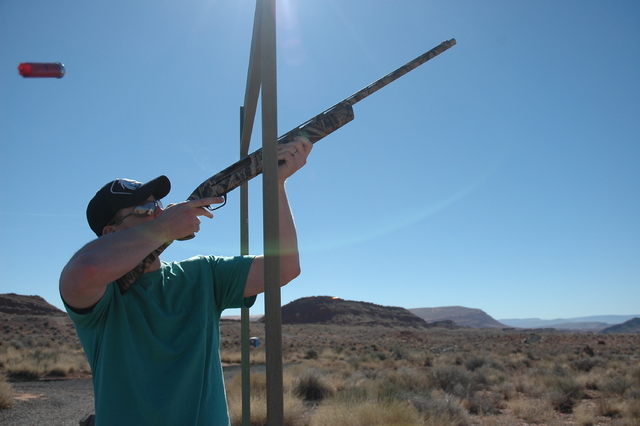Nevada hunters enjoy start to waterfowl seasons
Nevada’s waterfowl hunting seasons opened Saturday in the Northeast Zone, an area comprised of Elko and White Pine counties.
Southern Nevada hunters who made the trip north found success, which might be a sign of things to come as the seasons progress.
With seasons in the Northwest and South zones set to begin Oct. 7 and Oct. 14 and Moapa Valley on Oct. 28, hunters can expect to see a fall duck flight similar to that of 2016.
According to the 2017 Waterfowl Population Status Report from U.S. Fish and Wildlife Service, the population of breeding ducks was estimated at 47.3 million birds during the annual Waterfowl Breeding Population and Habitat Survey conducted in May and June. That estimate is less than the 48.4 million birds counted during the 2016 survey, but it remains 34 percent above the long-term average.
Above average precipitation during the past year is credited with bolstering duck populations, especially in the Canadian Prairies. That moisture was significant enough to delay agricultural harvest in 2017 and prevent it altogether in some locations in 2016. The prairies of the United States also benefited from average to above average precipitation.
The extra precipitation helped to increase the number of ponds available to breeding ducks to 6.1 million, 22 percent higher than the 2016 estimate of 5 million. In other words, habitat conditions were good, and that led to good bird production.
So, how do good habitat conditions on the Canadian and American prairies benefit waterfowl hunters in Nevada?
The answer is summed up by a rather simple statement found on the Nevada page of the Ducks Unlimited website: “A significant portion of our annual duck harvest migrates to us from the Prairie Pothole Region, also referred to as the ‘duck factory.’” That statement is supported by duck band recovery data reported by Nevada hunters from 1986 to 2015.
Another means scientists use to gather data about the duck harvest in Nevada is the Migratory Bird Harvest Information Program, commonly known as HIP. Anyone who hunts ducks, geese and other migratory birds must register for the HIP each year. Based on the information, the Fish and Wildlife service might send you a survey form so you can record the results of your hunting experiences through the season. Participation is voluntary.
Reports submitted through HIP are used by state wildlife agencies and the U.S. Fish and Wildlife Service to generate estimates of hunting activity and tally the number of migratory game birds harvested across the country each year. That information is used by biologists when setting hunting season dates and bag limits.
Based on HIP surveys the past two years, hunters can expect to harvest far more mallards than any other duck in Nevada. During the 2015-16 and 2016-17 seasons, for example, Nevada hunters bagged 9,390 and 13,155 mallards. Gadwall were the next most common, followed by green-winged teal, wigeon and northern shoveler.
Canada geese account for most of the hunter-harvested geese in Nevada with more than 4,000 birds taken each of the past two seasons. During that period, hunters killed just 273 snow geese and 44 white fronted geese. No other species of geese were harvested in Nevada.
One of the challenges for waterfowl hunters is identification of the various bird species, but help is available at Flyways.us and Ducks.org. Both sites provide images, written descriptions and habitat information about all duck and goose species. Ducks Unlimited also provides a free app that includes bird photos and audio recordings of the sounds they make.
Freelance writer Doug Nielsen is a conservation educator for the Nevada Department of Wildlife. His “In the Outdoors” column, published Thursday in the Las Vegas Review-Journal, is not affiliated with or endorsed by the NDOW. Any opinions are his own. Find him on Facebook at @dougwritesoutdoors. He can be reached at intheoutdoorslv@gmail.com.







